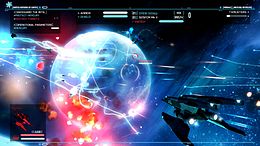
Descent: FreeSpace – The Great War, known as Conflict: FreeSpace – The Great War in Europe, is a 1998 space combat simulation IBM PC compatible computer game developed by Volition, when it was split off from Parallax Software, and published by Interplay Productions. In 2001, it was ported to the Amiga platform as FreeSpace: The Great War by Hyperion Entertainment. The game places players in the role of a human pilot, who operates in several classes of starfighter and combats against opposing forces, either human or alien, in various space-faring environments, such as in orbit above a planet or within an asteroid belt. The story of the game's single player campaign focuses on a war in the 24th century between two factions, one human and the other alien, that is interrupted in its fourteenth year by the arrival of an enigmatic and militant alien race, whose genocidal advance forces the two sides into a ceasefire in order to work together to halt the threat.

Homeworld 2 is a real-time strategy video game sequel to Homeworld, developed by Relic Entertainment and released in 2003 by now defunct publisher Sierra Entertainment. Its story concerns Hiigara's response to a new enemy called the Vaygr. Its gameplay takes a new direction with the enhancement of its graphics and audio. In contrast to the closely equivalent Kushan and Taiidan forces of the original game, Vaygr and Hiigaran spaceships differ significantly in design and application.

Nexus: The Jupiter Incident is a science fiction themed real-time tactics computer game developed by the Hungary-based Mithis Entertainment and published by HD Interactive. The game focuses on tactics and ship management instead of resource collection and base construction.

Jovian Chronicles is a science fiction game setting published by Dream Pod 9 since 1997. It introduces a complete universe for role-playing and wargaming space combat featuring mecha, giant spacecraft, and epic space battles.

Elite Dangerous is a space flight simulation game developed and published by Frontier Developments. The player takes the role of a pilot of a spaceship, and explores a realistic 1:1 scale, open-world representation of the Milky Way galaxy, with the gameplay being open-ended. The game is the first in the series to attempt massively multiplayer gameplay, with players' actions affecting the narrative story of the game's persistent universe, while also retaining a single-player mode. Elite Dangerous is the fourth game in the Elite video game series. It is the sequel to Frontier: First Encounters, released in 1995.
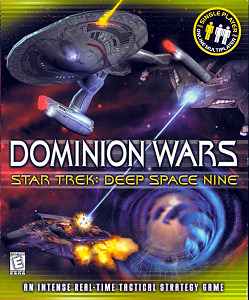
Star Trek: Deep Space Nine: Dominion Wars is a 2001 space combat/real-time tactics video game for Microsoft Windows developed by Gizmo Industries and published by Simon & Schuster. The game is based on the Star Trek TV show Star Trek: Deep Space Nine.

Homeworld is a real-time strategy video game developed by Relic Entertainment and published by Sierra Studios on September 28, 1999, for Microsoft Windows. Set in space, the science fiction game follows the Kushan exiles of the planet Kharak after their home planet is destroyed by the Taiidan Empire in retaliation for developing hyperspace jump technology. The survivors journey with their spacecraft-constructing mothership to reclaim their ancient homeworld of Hiigara from the Taiidan, encountering a variety of pirates, mercenaries, traders, and rebels along the way. In each of the game's levels, the player gathers resources, builds a fleet, and uses it to destroy enemy ships and accomplish mission objectives. The player's fleet carries over between levels, and can travel in a fully three-dimensional space within each level rather than being limited to a two-dimensional plane.

O.R.B: Off-World Resource Base is a space strategy game developed and published by Strategy First. Much like Homeworld and its sequel Homeworld 2, units can move in all three spatial dimensions.
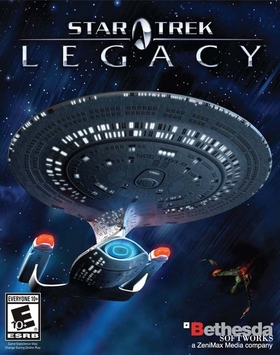
Star Trek: Legacy is a 2006 real-time tactics space combat video game for Microsoft Windows and Xbox 360 developed by Mad Doc Software and published by Bethesda Softworks in association with CBS Paramount Television and CBS Consumer Products. Originally slated for release in the fall of 2006 to coincide with the 40th anniversary of Star Trek, the Windows version was not released in North America until December 5, 2006, and the Xbox 360 version until December 15. In Europe, both the PC version and the Xbox 360 version were released on December 22, 2006.
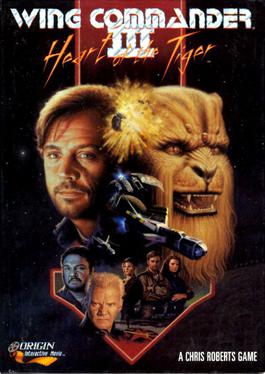
Wing Commander III: Heart of the Tiger is the third main game in Chris Roberts' Wing Commander science fiction space combat simulation video game series, developed and released by Origin Systems in December 1994. It was a departure from previous games in the series in that it uses extensive live action full-motion video to add an interactive movie-style presentation to the space combat gameplay, emphasized by its advertising slogan, "Don't watch the game, play the movie!". The game's more than two hours of video featured a number of prominent movie stars including Mark Hamill as Colonel Christopher "Maverick" Blair, Malcolm McDowell as Admiral Tolwyn, John Rhys-Davies as James "Paladin" Taggart and Thrakhath nar Kiranka, and Tom Wilson as Todd "Maniac" Marshall.
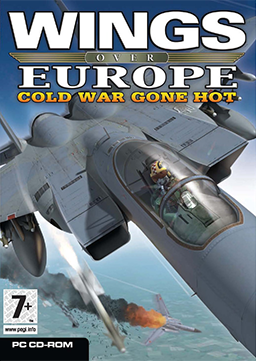
Wings Over Europe is a PC combat flight simulator game set during the Cold War era where the USSR has attacked NATO forces in West Germany.

Tom Clancy's H.A.W.X is an arcade flight video game developed by Ubisoft Bucharest and published by Ubisoft for Microsoft Windows, Xbox 360 and PlayStation 3, and by Gameloft for BlackBerry PlayBook, iOS, Palm Pre, Android and Symbian^3. It was released for Xbox 360 and PlayStation 3 in North America on March 3, 2009, for Windows on March 17, for iOS on December 9, for BlackBerry on January 8, 2010, for Palm Pre on April 2, for Android on September 13, and for Symbian on January 16, 2011. A Wii version was announced, but was ultimately canceled. In September 2010, a sequel titled Tom Clancy's H.A.W.X 2 was released for Xbox 360 and PlayStation 3. The Microsoft Windows and Wii versions were released in November 2010. In November 2018, Tom Clancy's H.A.W.X was added to the Xbox One's Backwards Compatibility list although only through physical media as it's not available on the Xbox Marketplace.

Dariusburst is a horizontal scrolling shooter developed by Pyramid and published by Taito. Forming part of the Darius series, it was released for the PlayStation Portable on December 24, 2009. Like previous Darius games, Dariusburst is an offbeat sci-fi shooter set in outer space with aquatic-themed robotic enemies. In keeping with tradition, the game also features branching paths instead of the linear progression found in most games of the genre. There are a total of 11 zones in the game, with 5 stages per run.

Dynasty Warriors: Gundam 3, known in Japan as Gundam Musou 3, is a tactical action video game based on the Gundam anime series and the sequel to 2008's Dynasty Warriors: Gundam 2. It was developed by Omega Force and published by Bandai Namco. The game was revealed in the September issue of Famitsu and was released on December 16, 2010 in Japan, June 28, 2011 in North America, July 1, 2011 in Europe, and July 12, 2011 in Australia.

Broken Age is a point-and-click adventure video game developed and published by Double Fine. Broken Age was game director Tim Schafer's first return to the genre since 1998's Grim Fandango, and was released for Microsoft Windows, macOS, Linux, iOS, Android, PlayStation 4, PlayStation Vita, and Xbox One platforms. The game was developed in two acts; the first was released on January 28, 2014, and the second was released on April 28, 2015. A retail version of the complete game for Windows, macOS, and Linux, published by Nordic Games, was released on April 28, 2015. A Nintendo Switch version was released on September 13, 2018.

Wasteland 2 is a post-apocalyptic role-playing video game developed by inXile Entertainment and published by Deep Silver. It is the sequel to 1988's Wasteland, and was successfully crowdfunded through Kickstarter. After the postponement of the original release date from October 2013, it was released for Microsoft Windows, OS X, and Linux in September 2014. An enhanced version of the game, named Wasteland 2: Director's Cut, was released in October 2015, including versions for PlayStation 4, Xbox One, and Nintendo Switch.

FTL: Faster Than Light is a real-time strategy roguelike game created by indie developer Subset Games, which was released for Microsoft Windows, macOS and Linux in September 2012. In the game, the player controls the crew of a single spacecraft, holding critical information to be delivered to an allied fleet, while being pursued by a large rebel fleet. The player must guide the spacecraft through eight sectors, each with planetary systems and events procedurally generated in a roguelike fashion, while facing rebel and other hostile forces, recruiting new crew, and outfitting and upgrading their ship. Combat takes place in pausable real time, and if the ship is destroyed or all of its crew lost, the game ends, forcing the player to restart with a new ship.

Road Redemption is a vehicular combat racing video game developed by New Orleans-based studios EQ-Games and Pixel Dash Studios as a spiritual successor to the Road Rash series. The game on PC was released on October 4, 2017. Console versions of Road Redemption were released on November 6, 2018 for PlayStation 4, Xbox One, and Nintendo Switch. A mobile version of Road Redemption were released on September 28, 2022 for Android and iOS.

Ironcast is a turn-based strategy video game with individual missions played through a match-three system. The game features procedurally generated missions and permadeath, staples of the roguelike genre. The game was developed by Dreadbit and released for PC platforms in March 2015, PS4 and Xbox One in March 2016, and Nintendo Switch version in August 2017.


